The Judge With No Name: the enigmas at the heart of Abnett and Winslade’s ‘Lawless’
9th August 2021
Colonial Judge Marshal Meta Lawson is back in the third volume of Lawless, the acclaimed sci-fi Western set in the universe of Judge Dredd.
In the first of a new series of short essays commissioned from selected comics critics that explore 2000 AD and the Treasury of British Comics’ latest graphic novel collections, Graeme McMillan looks at the questions at the heart of Lawless and how Abnett’s writing and Winslade’s art have worked together to produce one of the most enthralling Dredd-world stories of the last decade…

Dan Abnett and Phil Winslade’s Lawless feels, at times, like a series of interconnected confidence tricks centered around its main character.
It’s a story that is as defined by what it isn’t, as what it is; a story filled with feints towards particular ideas and genres that never quite allows the reader to settle into one particular version of what it is at heart. It’s a western, except it isn’t — there are robots and aliens and multiple elements that break the tropes in two beyond simply playing with them. The events of “Ashes to Ashes” go far beyond anything the genre is capable of, in wonderful ways, underscoring the ways in which the series is far more than a western, despite its creators claiming otherwise.
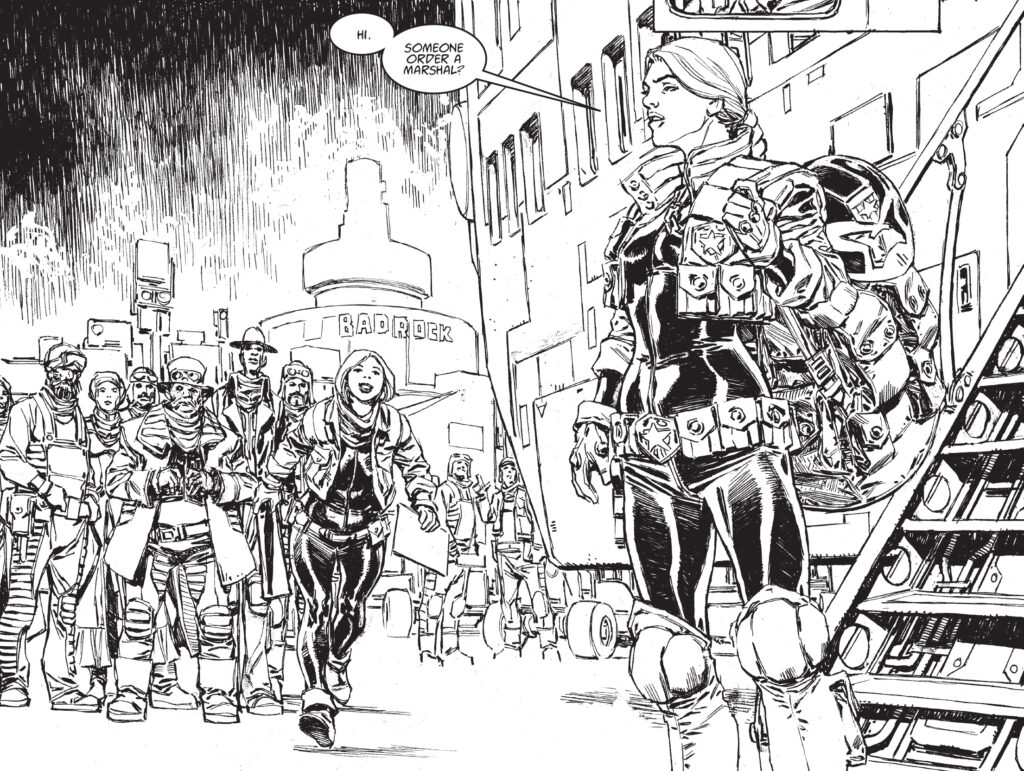
It’s also a story set in the world of Judge Dredd, except even that isn’t quite true. Obviously, it is a Dreddworld story — the main character is a Judge, after all, and there are allusions to the larger Justice Department setting of Dredd throughout, including the mega-corporation Munce, Inc., named for a fictional foodstuff that was first mentioned in a 2000 AD strip decades ago — but in both tone and setting, it’s entirely removed from what readers have come to expect from Dredd. There’s no Mega-City One, and one of the slyest running jokes of the strip is the ways in which Metta Lawson and other characters act in ways that directly contradict from the citizens of the average Dredd strip. There’s even actual swearing to be found in Lawless, as much as Joe Dredd would scowl at the notion.
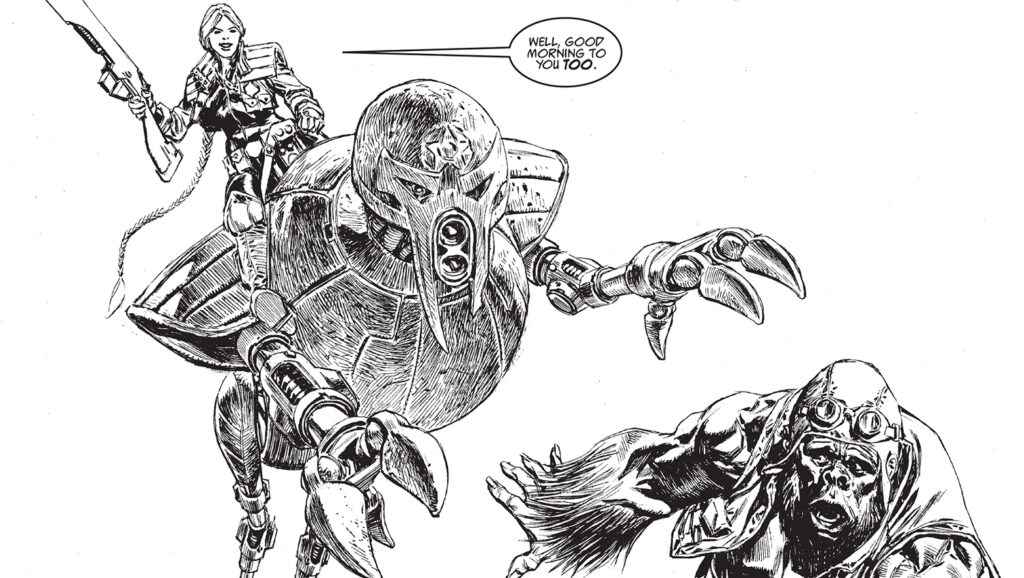
Perhaps more importantly, Lawless is a series that purposefully plays its cards close to its chest in terms of narrative intent. If the first few episodes, collected in Welcome to Badrock, left a number of questions unanswered to set up future stories, the conclusions of those stories in “Ashes to Ashes” nonetheless comes as a surprise: who really saw that particular turn of events coming? Did anyone really foresee these answers to the questions we all knew were out there?
All of which is to say: Abnett and Winslade have modeled the series after its lead character in the most appropriate, honest way imaginable. Just as Lawless is a marvel at distracting the reader from its mysteries and true nature by force of its charm and humor, so is Colonial Marshall Metta Lawson. Lawson is, to be blunt, one of the greatest series leads in 2000 AD and Megazine history — at once blunt in such a way that it feels as if she doesn’t have any filter or the ability to be anything other than honest in any situation, but also very clearly Someone With A Past™ that may not even be who she claims to be.
Add in no small amount of humor, a brusque no-nonsense attitude towards any kind of bullshit, and you have an enjoyable variation on the iconic western trope of the Man With No Name… not that Lawless is really a western, mind you.
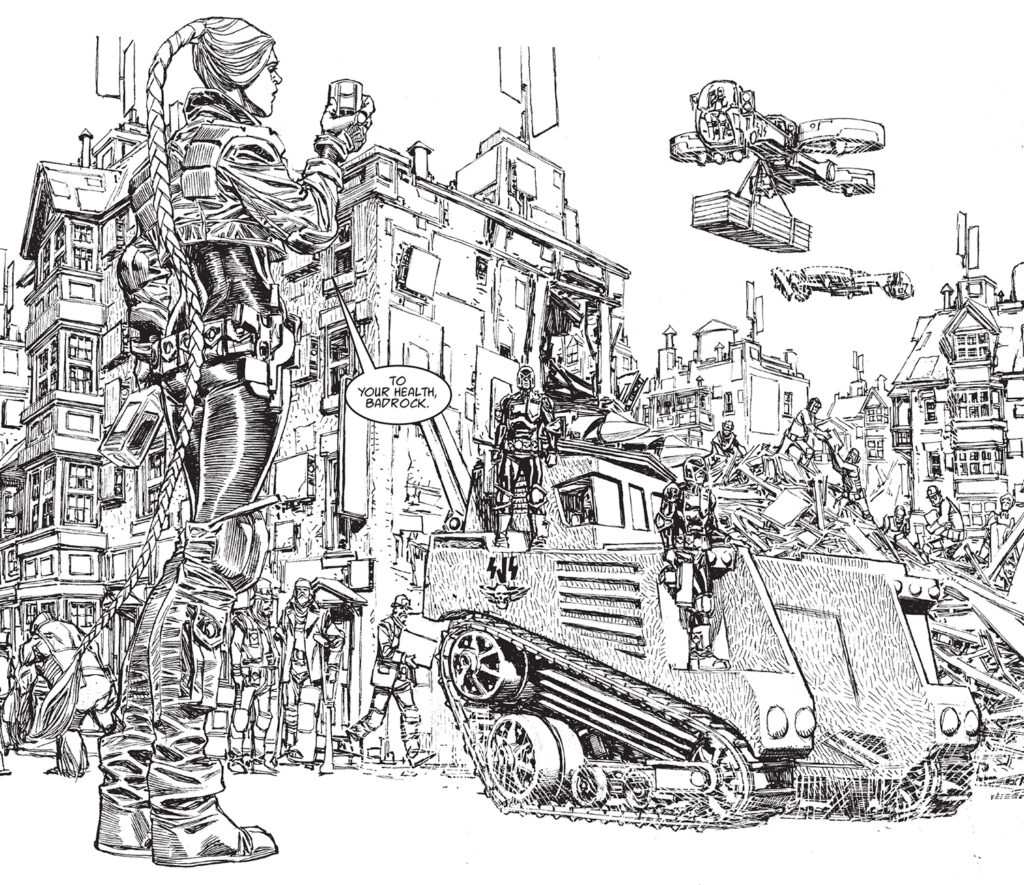
All of the above suggests that Dan Abnett’s writing does the heavy lifting when it comes to Lawless’ appeal, but that’s not the case; as much as Abnett’s mystery box writing, and his humor, for that matter, is central to why Lawless works, the series is entirely reliant on the unique artwork of Phil Winslade for the atmosphere and life he brings to proceedings. His highly detailed black and white line work brings with it echoes of everything from classic mid-century magazine illustration to the Eurocomix artwork of the likes of Moebius, to artistic contemporaries like Glenn Fabry or Steve Pugh, paying equal attention to the surroundings and the shanty town of Badrock as he does the sneers and smiles of the cast.
Every page of Lawless is a bravura performance, whether it’s an intimate conversation between Lawson and Deputy Pettifer, or a spread of the war between multiple factions that makes up the bulk of “Ashes to Ashes.” (Does that count as a spoiler? The mildest of all, if so.) Each page showcases Winslade’s attention to detail, and the different ways that manifests throughout the series — whether his character acting, which manages to be at once both subtle and dynamic enough to work as good comics, his unmatched ability to suggest a physical space with just a handful of lines, or action sequences that manage to successfully convey a vertiginous sense of motion throughout — make this a series that looks unlike anything else out there, in every sense a compliment to just how good Winslade really is.
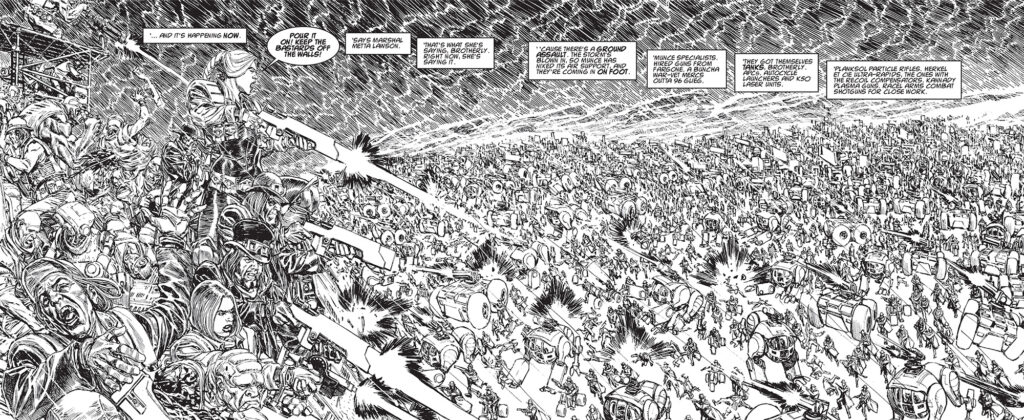
Without Winslade’s artwork, Metta Lawson wouldn’t work; it takes the level of humanity that he brings to each of the characters in the series to translate her intentionally elliptical personality into something that feels honest and fully-formed. The combination of Abnett and Winslade work magic together, somehow knowing how to play together so that just enough information is visible to the reader — whether visually, or in Lawson’s dialogue or actions — for her to feel like a believable figure, one that’s easy to empathize with and root for, even as we try and figure out just what her secret is.
Throughout its run to date, Lawless is a story of absences, and voids — of things that are missing, and elements defined by what they are not, more often than what they are. (We should take a brief second to note that even the title of the series nods towards this: Lawless, the absence of something being implied right there — this is a story defined by what it isn’t, indeed.) When secrets are revealed and cards are turned over in the third collected edition, it’s all the more impressive and fulfilling because, thankfully, they fit exactly into the spaces left for them — and, even as they arrive, they bring new absences and voids for the series to fill as it moves towards whatever lies in Badrock’s future.
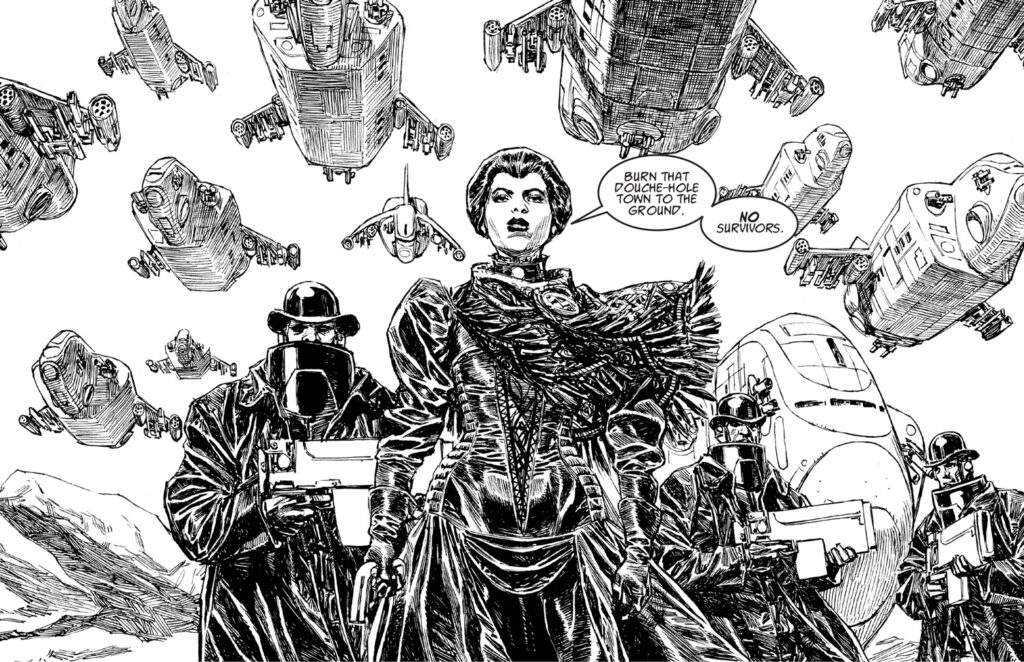
Graeme McMillan is a freelance comics and culture writer based in Portland, Oregon, whose work has appeared in The Hollywood Reporter, Wired, Polygon, Playboy, and countless other outlets. He has more opinions about the output of Tharg the Mighty and associated entities than is probably reasonable.
All opinions expressed in this article are the author’s own and do not necessarily represent the opinions of Rebellion, its owners, or its employees.
